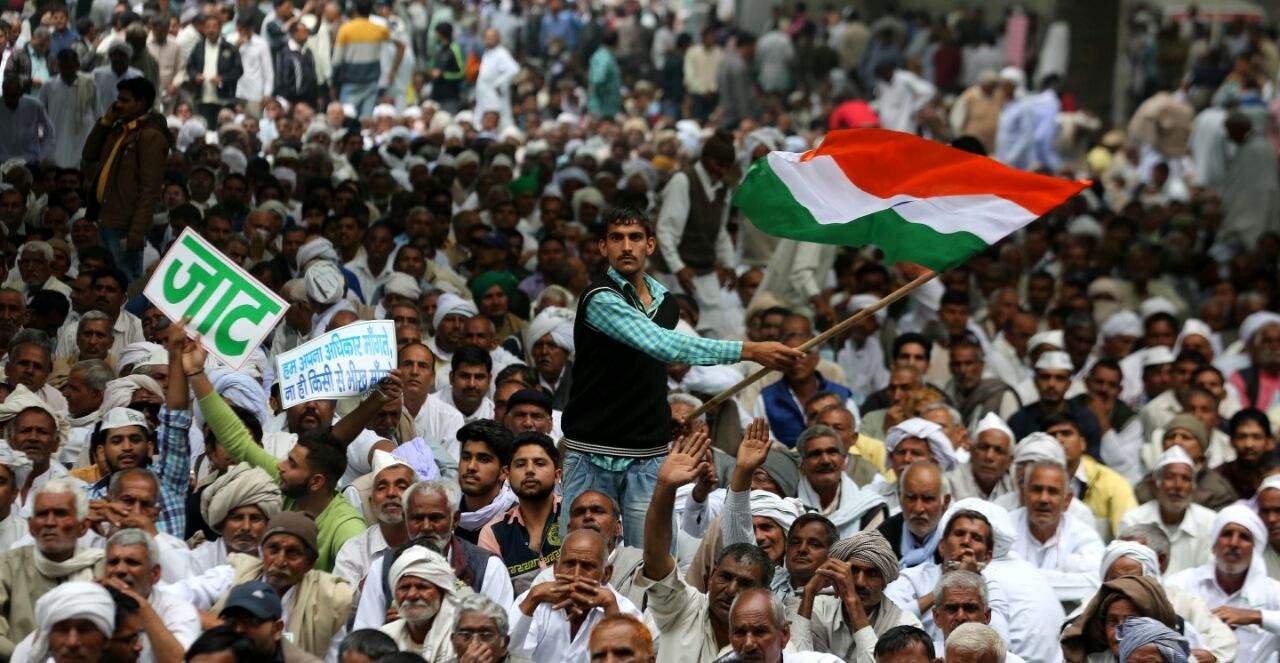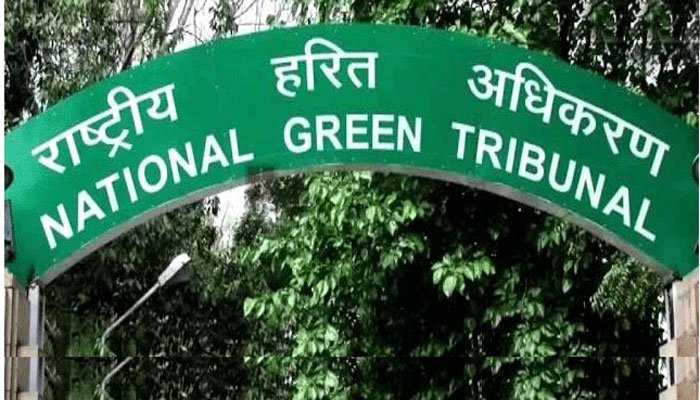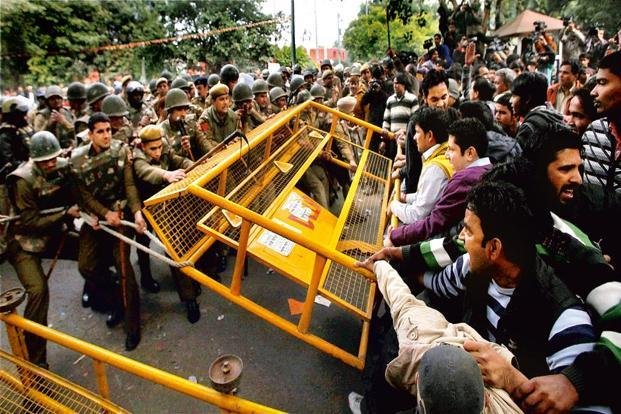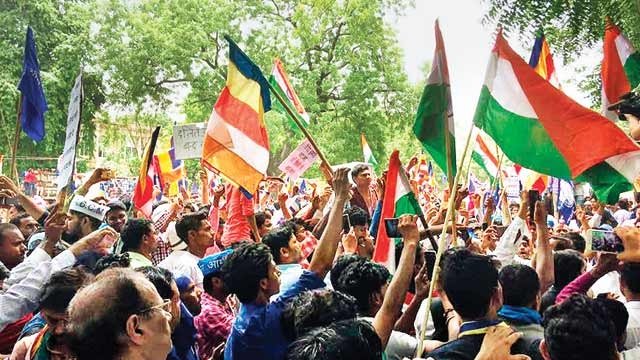On Thursday, NGT (National Green Tribunal) ordered NDMC, Delhi government and Delhi police to put a ban on all the protests and demonstrations at Jantar Mantar, the protest hotspot area of the capital. Notably, Jantar Mantar has been used as a site for the mass movement of Anna Hazare for Jan Lokpal Bill, Babri Masjid demolition protests, the Tamil Nadu farmers’ protest, OROP agitation and many others.
The NGT said such activities violate environmental laws.

What does the order say?
The bench headed by Justice RS Rathore said that the state has totally failed in protecting the right of citizens residing near Jantar Mantar area to enjoy a pollution-free environment, and ordered to remove all temporary structures, loudspeakers, public address systems and clean the entire Jantar Mantar area within four weeks.
The tribunal also directed the NDMC chairman, police commissioner and the Delhi government to file compliance reports within five weeks from Thursday.
As per the recent guidelines, the authorities have to shift the protesters, agitators and the people holding demonstrations to an alternative site at the Ramleela Grounds in Ajmeri Gate.
The NGT said:
“When the agitation consisting of thousands and thousands of people assemble on Jantar Mantar road, no one is there to check their total number and in case of exceeding five thousand, to send them to Ram Leela ground at Ajmeri Gate.”

Here are all the reasons behind the ban. You can read the entire judgement here.
Violation of Law
The green panel said that the continuous use of the area by protesters was in violation of environmental laws, including Air (Prevention and Control of Pollution) Act, 1981.
The bench said:
“The continuous activity of the protestors, agitators and dharna/processions for a number of years by now, the site has virtually become hell for the residents of the locality who cannot sleep at night, face noise pollution during the day, having difficulties in ingress and egress to their residences, much less to say, to take their vehicles up to their residences.”
“While one has a right to speech, others have a right to listen or decline to listen… If anyone increases his volume of speech and that too with the assistance of artificial devices so as to compulsorily expose unwilling persons to hear a noise raised to unpleasant or obnoxious levels then such person is violating the right of others to a peaceful, comfortable and pollution-free life. Article 19 cannot be pressed into service for defeating the fundamental right guaranteed by Article 21.“
Air Pollution and other health hazards
Moreover, there has been air pollution and health hazards due to lack of cleanliness and open defecation by the protestors in the nearby area.
The bench said, “The locality has completely changed, where one finds that men, women and children are bathing, washing their clothes under Delhi Jal Board tankers and the situation becomes worse when the people are seen defecating in the open, on pavements, which creates a totally unhygienic situation on the entire road.”
“The site has virtually become hell for the residents of the locality. On some occasions, the residents have to pay from their pockets to ensure that the area is cleaned of litter left by the protesters,” reported The Times Of India.

NGT’s order came on a plea filed last year by Varun Seth and others residing in the area.
Their plea stated that though the area was reserved as ‘residential’ in the 2021 Delhi Master Plan, protesters had built tents on the road, put up loudspeakers and stayed at the site for years now.
What will be the impact of this move?
BK Singh, deputy commissioner of police (New Delhi district), told Hindustan Times that nearly 100 police personnel remain posted at Jantar Mantar even when no big protests are organised.
“During bigger protests with large gatherings, we increase our manpower by seeking additional force from paramilitary forces and other police districts,” he said.
As per officials, shifting the protest location from Jantar Mantar will let them use the same force in other important works like controlling street crimes and patrolling the streets, reported Hindustan Times.
The NGT has also stated that this will ensure a balance between the rights of people with respect to their freedom of speech and expression, and that of residents of Jantar Mantar Road.

Why is Jantar Mantar a hub of protests?
Jantar Mantar has always been a hotspot of protest. One of the reasons for this is its close proximity to the Parliament and this gives the site a symbolic advantage. Moreover, it has been a ground for small or large protests prior to the Independence of India.
As per The Sunday Guardian, earlier protests used to happen closer to Parliament building at the boat club on Rajpath. Later, due to security reasons and the large gathering of people, it was decided to restrict protests at Jantar Mantar.

















